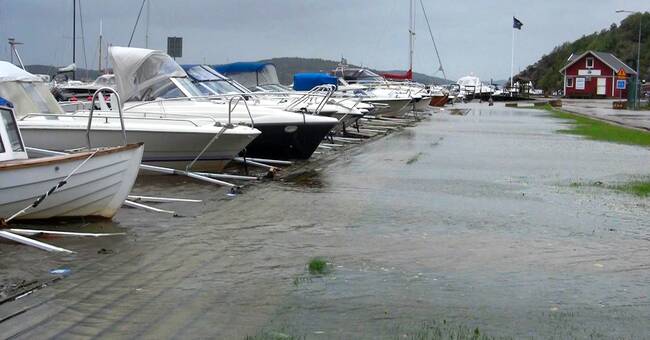Temperatures are rising across the globe as a result of climate change.
This means that the sea temperature increases and that the water then takes up more space.
The melting of the ice in the Arctic and Antarctic also contributes to rising sea levels.
Since the beginning of the 20th century, sea levels have risen by about 20 centimeters, globally.
On the west coast, land uplift is taking place, ever since the ice sheet disappeared.
The ice pushed down the land masses, and when it disappeared, the land level rose again.
The land uplift counteracts
Along the coast of Västra Götaland, the sea level rise is still negative, the country is thus rising more than the sea level does.
Since 1890, the land uplift has been 17 centimeters in Stenungsund.
In southern Sweden, the conditions are reversed.
In Helsingborg, the sea level has instead been raised by 9 centimeters during the same period.
Uncertain calculations
It is difficult to predict and calculate how much the sea level will rise along Sweden's coasts, but researchers expect around a half - meter sea level rise by the year 2100 in Västra Götaland.
During storms and storms, the elevation gain is just over two meters, instead of the day's one and a half.
Had the land uplift not continued, the sea level would have risen even more.
In Henån on Orust, for example, the water level is raised by about 75 centimeters by the year 2100.
Warmer weather
It is worth recalling that these calculations are very approximate, as they are affected by whether or not we will continue to emit greenhouse gases.
Right now, SMHI estimates that a temperature increase of 2.2 degrees in Sweden is likely by the year 2100. The more pessimistic scenario is about temperature increases of over 4 degrees to 2100. Then the sea level can rise even more.
In the clip below, you meet two people on the west coast who are already suffering from recurring floods.
May take an inflatable boat to the vet - just the beginning of climate change

